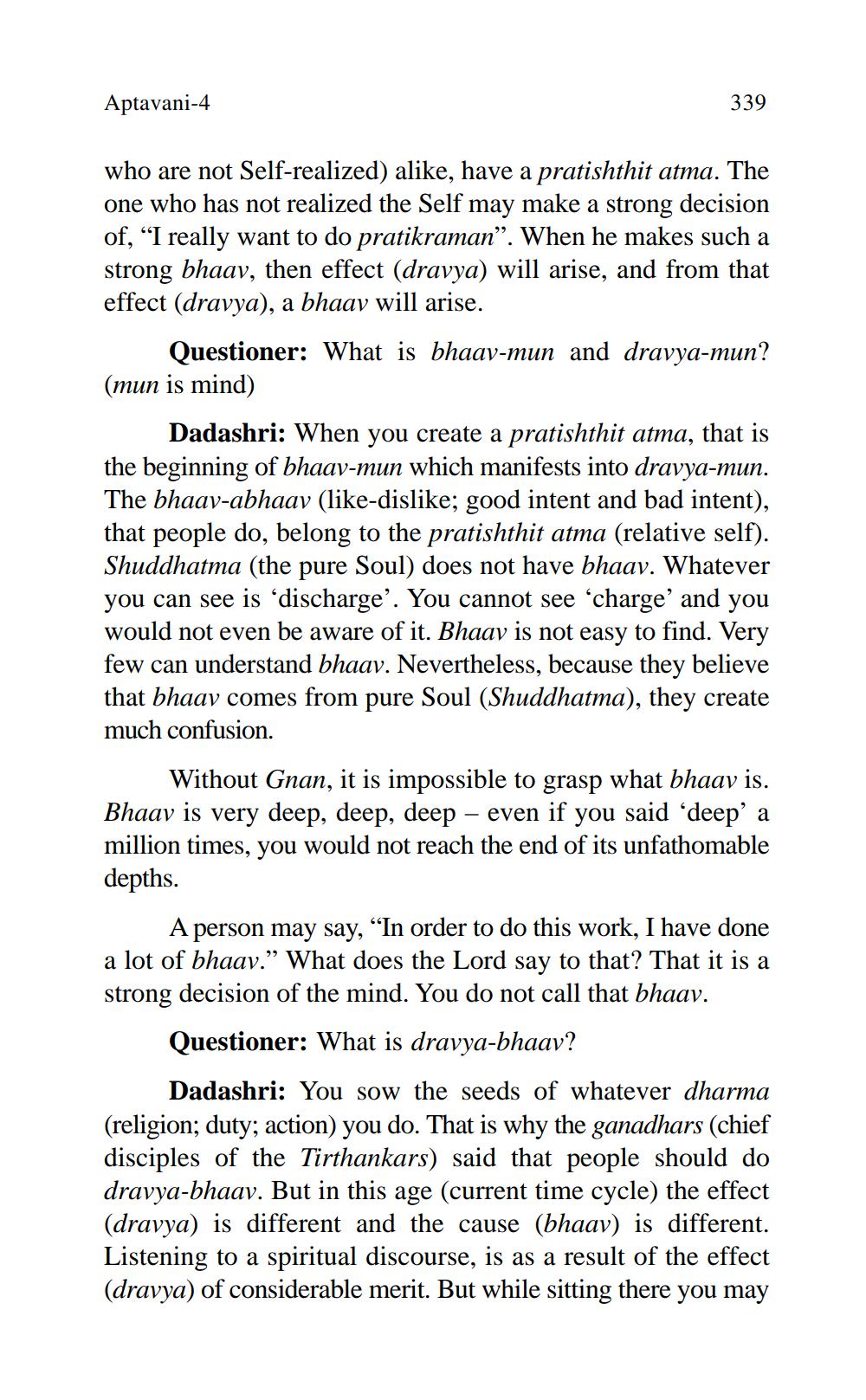________________
Aptavani-4
339
who are not Self-realized) alike, have a pratishthit atma. The one who has not realized the Self may make a strong decision of, “I really want to do pratikraman”. When he makes such a strong bhaav, then effect (dravya) will arise, and from that effect (dravya), a bhaav will arise.
Questioner: What is bhaav-mun and dravya-mun? (mun is mind)
Dadashri: When you create a pratishthit atma, that is the beginning of bhaav-mun which manifests into dravya-mun. The bhaav-abhaav (like-dislike; good intent and bad intent), that people do, belong to the pratishthit atma (relative self). Shuddhatma (the pure Soul) does not have bhaav. Whatever you can see is 'discharge'. You cannot see 'charge and you would not even be aware of it. Bhaav is not easy to find. Very few can understand bhaav. Nevertheless, because they believe that bhaav comes from pure Soul (Shuddhatma), they create much confusion.
Without Gnan, it is impossible to grasp what bhaav is. Bhaav is very deep, deep, deep - even if you said “deep' a million times, you would not reach the end of its unfathomable depths.
A person may say, “In order to do this work, I have done a lot of bhaav.” What does the Lord say to that? That it is a strong decision of the mind. You do not call that bhaav.
Questioner: What is dravya-bhaav?
Dadashri: You sow the seeds of whatever dharma (religion; duty; action) you do. That is why the ganadhars (chief disciples of the Tirthankars) said that people should do dravya-bhaav. But in this age (current time cycle) the effect (dravya) is different and the cause (bhaav) is different. Listening to a spiritual discourse, is as a result of the effect (dravya) of considerable merit. But while sitting there you may




